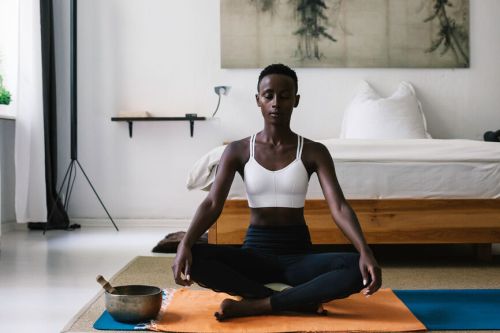‘Body Stress Release’ Breathing Is Like a Good Long Exhale for Every Muscle
The "body stress release" meditation for stress relief deserves a spot in your daily routine. Here's how to do it in three easy steps.

After a year-long hiatus from meditation, I’ve finally made my way back to the daily practice of “tuning into my breath.” It now feels like I’m navigating the murky waters of my mind for the very first time. But one recent morning, a virtual instructor cued me through a back-to-basics “body stress release” meditation on the Inscape app. I instantly remembered how powerful a tool the ancient practice can be.
From a comfortable sitting position, you slowly begin to tense your muscles one-by-one before releasing them with an exhale. “Progressive muscle relaxation is a deeply relaxing technique used by athletes and shared by psychologists to relieve stress and anxiety throughout the body,” Inscape tells Well+Good. “It is very useful for people who suffer from insomnia, students who have been over mentally stimulated, or anyone who needs to release any stress from the day.”
When you intentionally tense and release a muscle, it breaks up your normal patterns of physical (and, on a deeper level, emotional) tension. “The act of tensing and releasing these muscles brings awareness to specific areas of our body, which helps reach a deeper mind-body connection,” says Inscape. In other words, the meditation for stress relief acts as a way for you to take back the reigns on how you’re feeling.
Here’s how to use breathing meditation for stress relief
“It’s nice to rest for a few breaths between each tensing,” says Inscape, “but it can actually be done very fast and still be effective, as long as you pay attention and give your full presence to each tense and release.”
Step 1: Select a focus area of the body, inhale and tense the muscles for the length of the inhale and hold. (For example, if you choose your hand, make a fist.)
Step 2: Relax and release the muscle as you exhale. (Release your fist.)
Step 3: Keep going from body part to body part until your full body relaxes. (Forearm, upper arm, shoulder, and so on.)
Feel like a stretch after your meditation for stress relief? You got it:
Can’t sit still? Try therapeutic cooking or a walking meditation.










